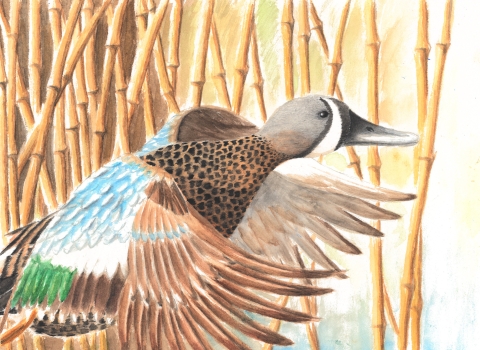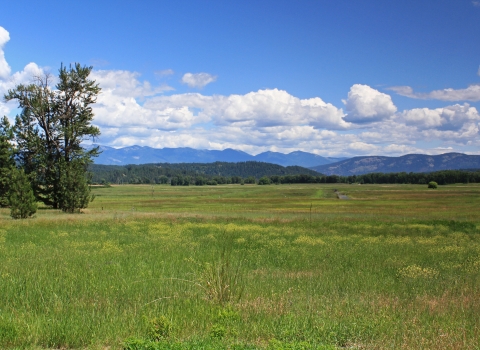
Major construction projects at Kootenai NWR will affect refuge access during the summer of 2025. These actions are in support of the Kootenai Floodplain Reconnection Project.
Beginning June 2025, the Auto Tour Route and Riverside Road will be closed to all access, including vehicles, pedestrians, and bicycles. Additionally, Riverside Road access to the Deep Creek Trail will be closed. We anticipate these roads will reopen in late September or early October 2025.
Areas remaining open during project work include Refuge Headquarters, the Myrtle Falls Trail (and parking area), Ole Humpback Trail, and Deep Creek Trail (access from Lions Den Road only).
If you have questions or concerns, please contact fw1kootenainwr@fws.gov or call (208) 267-3888.
Visit Us
Kootenai National Wildlife Refuge provides numerous recreation opportunities to thousands of visitors every year. People enjoy viewing the unique geology and diverse wildlife, whether driving or hiking. Regulation of recreation activities allow for public enjoyment of the refuge while still protecting the wildlife and habitats.
Location and Contact Information
- Kootenai National Wildlife RefugeView Details287 Westside Road Bonners Ferry, ID 83805-5172
About Us
Nestled beside the Selkirk Mountains of northern Idaho, this 2,774 acre refuge provides diverse habitats for a large variety of wildlife. Wetlands, meadows, riparian riparian
Definition of riparian habitat or riparian areas.
Learn more about riparian and coniferous forests, and cultivated agricultural are interspersed throughout the refuge to provide a sanctuary, primarily for migrating waterfowl. Kootenai was established in 1964 "for use as an inviolate sanctuary, or for any other management purpose, for migratory birds."
What We Do
To help plants and wildlife, refuge staff use a variety of habitat management techniques to maintain, recover or enhance plant and wildlife values. Refuge staff carefully consider any management techniques and employ them in varying degrees according to the situation.
Our Species
Despite its relatively small size of 2,774 acres, a wide variety of habitat types can be found on the refuge which plays an important role in the large number of wildlife species that use the refuge during migration and breeding seasons. Over 300 species of wildlife - 22 species of fish, 7 species of amphibians, 6 species of reptiles, 45 species of mammals, and over 223 species of birds have been observed on the refuge.
Projects and Research
Project sponsors are proposing to restore floodplain connectivity to the Kootenai River historic floodplain within the Kootenai National Wildlife Refuge by breaching levees, raising refuge and county roads, replacing water control structures, and enhancing 830 acres of riparian and wetland habitats.
Project LocationKootenai NWR is 5 miles east of Bonners Ferry,...
























